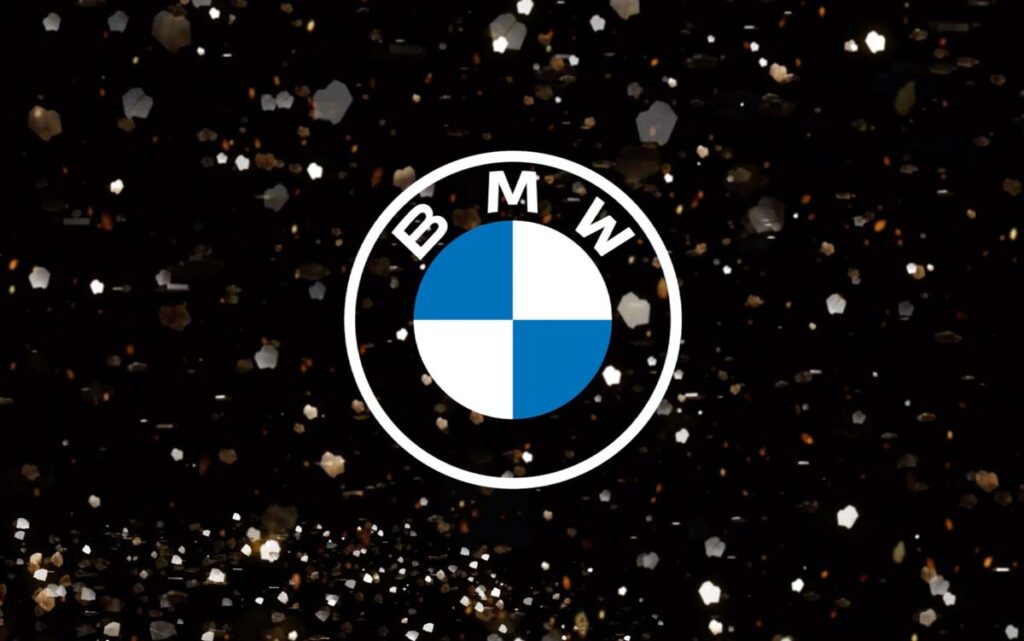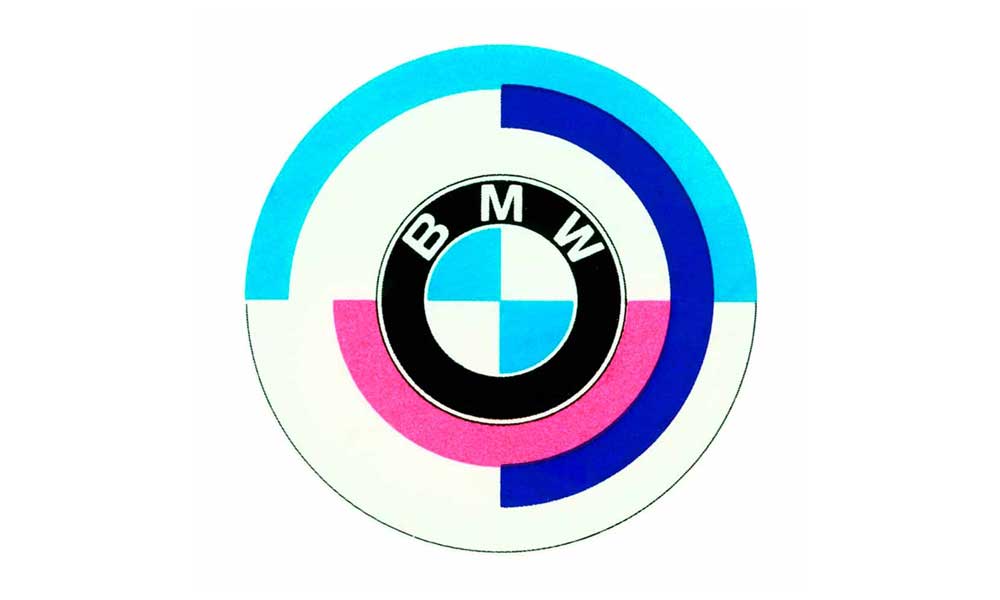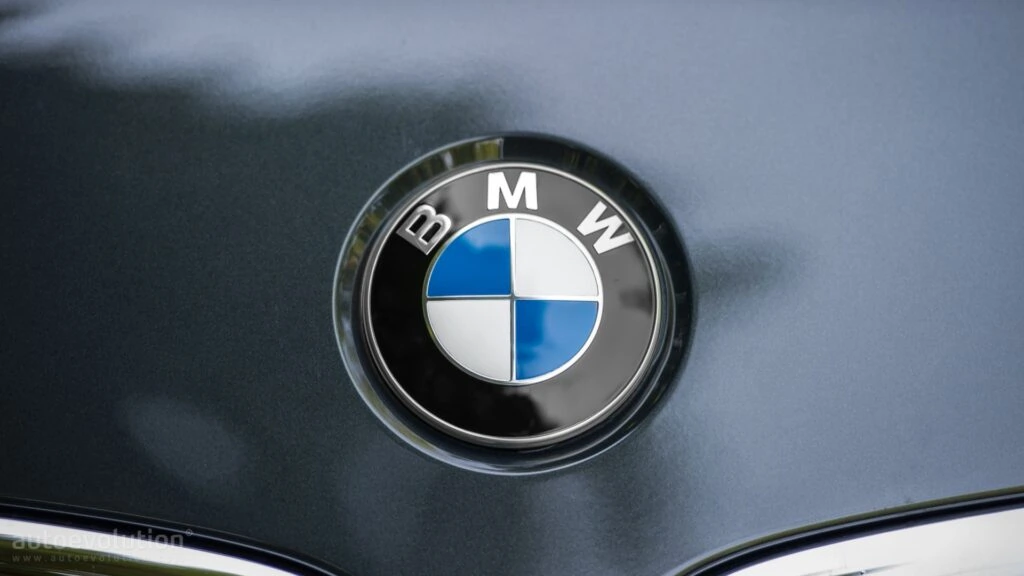History of the BMW Logo Design: A Century of Evolution
The iconic BMW logo is one of the most recognisable emblems in the automotive industry. The distinctive blue and white roundel has adorned BMW vehicles for over a hundred years. But did you know the BMW logo has undergone several significant changes throughout the company?
In this article, we’ll take you on a journey through time to explore the origins and evolution of the famous BMW logo design. You’ll learn about the meaning behind the colours and symbols, discover why the logo transformed drastically in the 1950s, and see how it has been modernised over the decades while still upholding its heritage.
Whether you’re a lifelong BMW fan or just appreciate compelling brand stories, you’ll enjoy this in-depth look at the rich history behind this celebrated brand emblem. So let’s get started!
Table of Contents
From Planes to Automobiles: The Early Days of BMW

It may surprise some that BMW did not start manufacturing luxury vehicles. The company traces back to 1916 as an aircraft engine factory in Munich, Germany, called Bayerische Flugzeugwerke AG. They specialised in building engines for the German Air Force during World War I.
In 1917, the company logo was born when founder Karl Rapp designed an advertisement poster with a black propeller spinning against a blue sky backdrop. This iconic colour scheme is said to have been inspired by the Bavarian flag, giving the nod to the company’s home base.
When the war ended in 1918, Germany was forbidden from manufacturing aeroplanes under the Treaty of Versailles. So, the company shifted its focus to building railway brakes and motorcycle engines to stay afloat during difficult postwar economic conditions.
In 1922, the firm evolved into the Bayerische Motoren Werke AG, or Bavarian Motor Works, which became known by its acronym BMW.
1928-1945: The First BMW Automobile Logo Debuts

In 1928, BMW made its first foray into automobile manufacturing when it purchased the Fahrzeugfabrik Eisenach car company. This takeover resulted in BMW’s first automotive logo design being unveiled in 1929.
The inaugural BMW car emblem was a simplified variant of Karl Rapp’s original propeller poster, with the four quadrants removed. The remaining blue and white roundel had sharp, sleek contours – a modern representation of the BMW identity.
This logo appeared prominently on BMW’s first production automobile, the Dixi 3/15. Underneath the roundel sat two capital letters in an arched typeface that spelt out the company name, Bayerische Motoren Werke.
Over the next decade, the core elements of the logo design remained, including the iconic blue and white colour scheme. However, the proportions, borders, typefaces, and dimensions underwent tweaking and polishing during the 1930s.
Then, in 1942, the headquarters in Munich instructed all company locations to standardise the BMW trademark across all communications and products. This brought consistent rules around sizing ratios, allowable typefaces, space around the roundel, and colour tones.
Interestingly, during World War II, BMW was required to halt automotive manufacturing from 1941 to 1945. Instead, they focused on German war production, making aircraft engines, motorcycles, and pots and pans. Despite diversifying into other industries, the BMW logo still represented the promise of future automotive innovation.
Bringing Gorgeous Movement to Modern BMWs in the 1950s

When BMW resumed automobile production in 1952 after the war, the world was again hungry for German engineering and style. BMW unveiled an entirely reimagined logo in 1953 to herald its triumphant return. Dubbed the “Uberkaro” pattern, the design was intended to embody speed and motion.
Inspired by the striped pattern on classic race cars, Uberkaro featured two opposing sets of 4 blue and silver lines sweeping around a black roundel. For the first time, the inner white area showcased the BMW initials and the entire “Bayerische Motoren Werke” name wrapped around the top.
The flowing double-stripe frame was widely celebrated for capturing BMW’s identity as a dynamic automotive brand born with racing in its blood. Auto historians view its vortex-like movement as some of the earliest “car jewellery.”
But by the late 1950s, BMW realised the ornate Uberkaro design did not translate well when printed small or rendered monochromatically. Seeking maximum visual impact and reproduction clarity, they set out to craft an evolved look for the new decade.
1960s Refinement Towards Today's Iconic Style

In the 1960s, BMW sought to craft a distinctive yet minimalist branding image. After much experimentation, they finally landed on the timeless white and blue roundel we all recognise today in 1966.
Gone were the intricate silver stripes that proved hard to reproduce. They were replaced by a uniform royal blue hue ringing the perimeter. While the interior remained white, the text was removed to eliminate clutter and maximise stand-out appeal. A refreshing flattened silhouette replaced the former dimensional drop shadow as well.
This crisp, clean style conveyed BMW’s identity as an automaker producing well-engineered “driving machines.” The logo was well-poised to become a globally admired iconography heading into the 1970s and 80s.
There have been minor variations in roundel dimensions and lettering rules over the decades. The letters “BMW” were notably integrated into specific model badges in the 1990s.
But the essential 1966 design ethos valuing legibility and stripped-down eloquence continues to drive BMW logo design over 50 years later. It remains a shining example of a brand evolving towards timeless visual distillation.
Modernising a Masterpiece for the 21st Century

While the classic roundel design requires no major transformation to stay relevant today, BMW continues advancing how the logo is applied. Contemporary usage demands digital rendering across websites, apps, videos, and more.
In recent years, they brought the iconic logo into 3D for the first time, showing the badge at a slight angle. BMW also unveiled a new transparent interpretation in 2018 that allows the actual vehicle colour to show through. Special editions like BMW’s art cars and hybrid electric i-series incorporate vibrant colours amid the usual blue and white.
These contemporary applications help carry BMW’s storied identity into the digital age while still celebrating tradition. The brand stays appealing across generations as a shared love of ultimate driving machines brings out our inner racecar enthusiasm!
Considering how faithfully the BMW badge has developed through a century of social, economic, and technological change across Germany, you cannot help but admire its resolute expression of high-performance motoring.
The Meaning Behind the Colours & Imagery
BMW’s legendary logo certainly captures attention on sight. But the specific colours and imagery carry deeper meaning:
- Blue & White Quadrants = Bavarian Flag colours honouring BMW’s German heritage based in Munich. They represent fidelity, trust, and excellence.
- Black Ring = When included, it adds bold definition from lightweight carbon material.
- Silver Border = A nod to the BMW engine’s steel composition. Implies High-value automotive engineering.
Those classic BMW colours signify dynamism, motion power, precision, and high-performance mobility. Just looking at the roundel emblem evokes the thrill of driving a BMW vehicle built for speed.
Odd & Innovative Appearances Throughout History

BMW likes to surprise and delight drivers with fun showcases of their famous badge. Over the decades, their blue and white logo has made odd appearances across pop culture, including:
- The BMW Art Car Collection – Since 1975, BMW has handed over car canvases to famous artists like Andy Warhol, David Hockney, and Jeff Koons to design wildly creative vehicular works to race on the track.
- BMW Movie Film Appearances – James Bond has thrived thanks to his gadget-packed BMW rides in multiple films highlighting the BMW logo for chase scenes. BMW Product Placement remains iconic in chase sequences for Pierce Brosnan’s Bond.
- Architectural Shows of Brand Pride – For their European HQ grand opening in 1973, BMW etched a massive glowing logo in the building’s facade towering over Munich. Their not-so-subtle skyline branding caused controversy, requiring later removal.
- NASA Mars Rover 2020 – BMW constructed a replica of their famous kidney grille and roundel logo from 2 billion-year-old Australian red rock. It’s attached to the Mars Perseverance Rover, acting as an interplanetary brand ambassador cruising around space!
BMW continually innovates ways to embed its legendary emblem in artwork, architecture, and entertainment.
Consistent Leadership as the Most Reputable Global Car Company

Since its 1920s debut, the BMW Powerhouse automaker has earned global sales domination and industry honours such as:
- World’s Top Selling Premium Automaker – 11 Consecutive Years
- World Ranking of Most Admired Companies – #1 Automobiles Category
- World’s Most Reputable Car Company – 14x #1 Rankings
That famous BMW logo signifies vibrant resilience and an excellent reputation. Over 100 years, multiple wars, financial troubles, and rebirths – the navy blue and white BMW roundel persists in embodying top-tier performance.
What started as a propeller paying homage to Bavarian aviation now fittingly symbolises wheels in motion, ready for adventure. The iconic BMW logo will continue leading drivers into the future of mobility.
An Enduring Mark of Driving Passion
The legendary BMW roundel logo has come far from its early 20th-century propeller design. Through multiple stylish incarnations, that navy blue and white emblem continues to represent BMW’s legacy of uber-powered motor mastery.
More than just a car company, driving a BMW vehicle makes a statement about someone’s character. That BMW logo fuels passionate adventures for owners to feel alive behind the wheel.
As BMW moves ambitiously into electric mobility and high-tech autonomous exploration, expect its trademark logo to accrue more meaning as it evolves.
The famous BMW badge stands as a globally distinguished mark of excellence. For over a century across moving mediums, their twin-propeller spirit signifies the stimulation of driving dreams.
FAQs: Digging Deeper into the Famous Design
If this journey through BMW logo history has you eager to dig deeper, below we answer some of the most frequently asked questions about this legendary brand emblem:
What do the BMW logo colours symbolise?
Blue and white represent the Bavarian flag as a nod to BMW’s German heritage, while some say blue sky and white propeller blades tie back to their aircraft engine origins.
Why did BMW switch from an aeroplane propeller design initially?
The propeller logo was simplified once BMW began making cars to focus on conveying speed and mobility.
What did the “Uberkaro” stripped logo mean in the 1950s?
Inspired by racecars, stripes represented fluid motion and driving pleasure – the BMW “ultimate driving machine” ethos.
Why does BMW prefer using a roundel versus a square logo shape?
The round badge stands out better visually and honours aviation roots. Angled on the hood, it also reflects light elegantly, conveying luxury.
Did BMW ever change logo colours besides blue and white?
Unique models like art cars and BMW’s “i” electric series incorporate vibrant colours, but traditionally, BMW stays consistent with only blue and white.
So there you have it – the centuries-long, fascinating evolution of the BMW logo. With such rich history and heritage built into every swooping line and crisp shade of blue, it’s no wonder the emblem continues turning heads today. Whenever you spot this roundel on the street, remember that each sighting connects you to over 100 years of history of illustrious Bavarian Motorworks!
